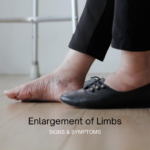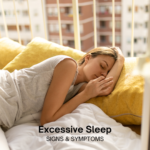Understanding Erectile Dysfunction: Causes, Symptoms, and Treatments
Erectile dysfunction (ED), commonly referred to as impotence, is a condition characterized by the consistent inability to achieve or maintain an erection sufficient for satisfactory sexual intercourse. While occasional erection troubles are not uncommon, persistent ED can be a sign of health issues needing medical intervention. This article delves into the causes, symptoms, diagnosis, and treatment options for ED, providing a comprehensive overview of this common yet often misunderstood condition.
Causes of Erectile Dysfunction
Erectile dysfunction can stem from a variety of physical, psychological, and lifestyle-related factors. Understanding these underlying causes is crucial for effective treatment.
-
Physical Causes:
- Cardiovascular Diseases: Conditions such as atherosclerosis (hardening of the arteries), hypertension, and high cholesterol can impair blood flow to the penis, making erections difficult.
- Diabetes: This can cause nerve and blood vessel damage, leading to ED.
- Obesity: Excess weight can lead to cardiovascular problems and diabetes, both of which are risk factors for ED.
- Hormonal Imbalances: Low levels of testosterone or other hormonal issues can affect sexual function.
- Neurological Disorders: Conditions like Parkinson’s disease, multiple sclerosis, and spinal cord injuries can interfere with the nervous system’s ability to communicate with the reproductive system.
- Medications: Some drugs, including antidepressants, antihistamines, and medications for high blood pressure, can cause ED as a side effect.
-
Psychological Causes:
- Stress and Anxiety: High levels of stress and anxiety can interfere with sexual arousal.
- Depression: This condition often leads to a decrease in sexual desire and performance.
- Relationship Issues: Poor communication, unresolved conflicts, and lack of intimacy can contribute to ED.
-
Lifestyle Factors:
- Smoking: This can damage blood vessels and restrict blood flow to the penis.
- Alcohol and Substance Abuse: Excessive consumption of alcohol and illicit drugs can lead to ED.
- Lack of Physical Activity: A sedentary lifestyle can contribute to cardiovascular problems and obesity, increasing the risk of ED.
Symptoms of Erectile Dysfunction
The primary symptom of ED is the inability to get or keep an erection firm enough for sexual intercourse. Other symptoms may include:
- Reduced sexual desire
- Trouble getting an erection
- Difficulty maintaining an erection during sexual activities
It’s important to note that occasional difficulties with erections are normal. However, if the problem is ongoing and causing distress, it is advisable to seek medical help.
Diagnosis of Erectile Dysfunction
Diagnosing ED involves a thorough evaluation to identify the underlying cause. This typically includes:
- Medical and Sexual History: A doctor will review the patient’s health history and sexual activity to identify potential contributing factors.
- Physical Examination: This may include an examination of the penis and testicles, checking nerve sensations, and evaluating the patient’s overall health.
- Blood Tests: These can help identify conditions like diabetes, heart disease, and low testosterone levels.
- Urinalysis: A urine test can also detect signs of diabetes and other underlying health conditions.
- Ultrasound: This test can check blood flow to the penis.
- Psychological Exam: To identify psychological causes, the doctor may ask questions or have the patient complete a questionnaire about their mental health.
Treatment Options for Erectile Dysfunction
Treatment for ED will depend on the underlying cause. It often involves a combination of medical interventions, lifestyle changes, and psychological counseling.
-
Medications:
- Phosphodiesterase Type 5 Inhibitors (PDE5i): Common drugs in this category include sildenafil (Viagra), tadalafil (Cialis), and vardenafil (Levitra). These medications improve blood flow to the penis, facilitating erections.
- Testosterone Replacement Therapy: If low testosterone levels are contributing to ED, hormone replacement therapy might be recommended.
- Other Medications: In some cases, medications that are injected directly into the penis or inserted as a suppository into the urethra might be used.
-
Lifestyle Modifications:
- Exercise: Regular physical activity improves blood flow and reduces stress.
- Healthy Diet: A balanced diet can improve cardiovascular health and help maintain a healthy weight.
- Quit Smoking and Limit Alcohol: These changes can improve overall health and reduce ED symptoms.
- Reduce Stress: Techniques such as meditation, yoga, and deep-breathing exercises can help manage stress.
-
Psychological Counseling:
- Therapy: Counseling or therapy can help address mental health issues such as anxiety, depression, or relationship problems.
- Sex Therapy: Working with a therapist specialized in sexual health can help improve communication and intimacy with a partner.
-
Medical Devices:
- Vacuum Erection Devices (VEDs): These are external pumps that create a vacuum around the penis, drawing blood into it and causing an erection.
- Penile Implants: In severe cases, surgical implants may be an option. This involves placing devices into both sides of the penis that can be inflated or bent into position to achieve an erection.
-
Surgery:
- Vascular Surgery: In rare cases, surgical intervention might be necessary to improve blood flow to the penis.
Conclusion
Erectile dysfunction is a common condition that can significantly impact a man’s quality of life and intimate relationships. Understanding the various causes, symptoms, and treatment options is essential for managing and overcoming this condition. If you or someone you know is experiencing symptoms of ED, it is important to seek medical advice. With proper diagnosis and a tailored treatment plan, most men can find relief from ED and enjoy a healthy, satisfying sex life.
4o





